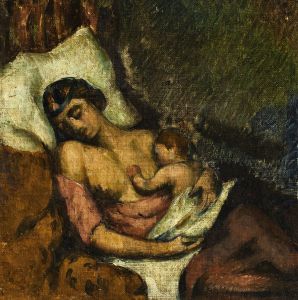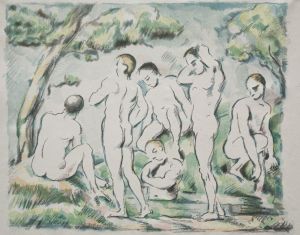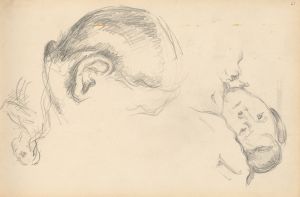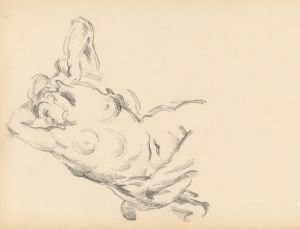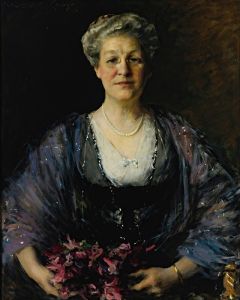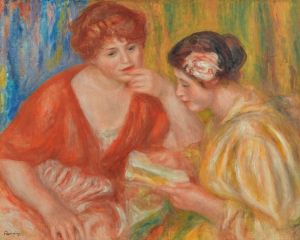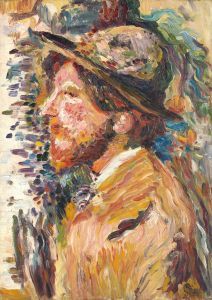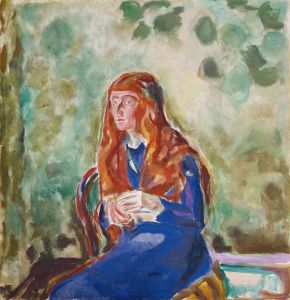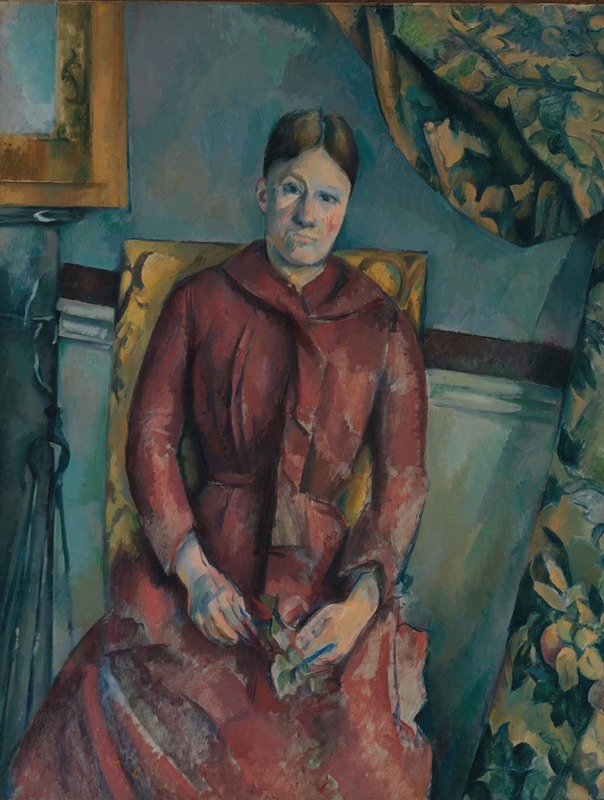
Madame Cézanne in a Red Dress
A hand-painted replica of Paul Cézanne’s masterpiece Madame Cézanne in a Red Dress, meticulously crafted by professional artists to capture the true essence of the original. Each piece is created with museum-quality canvas and rare mineral pigments, carefully painted by experienced artists with delicate brushstrokes and rich, layered colors to perfectly recreate the texture of the original artwork. Unlike machine-printed reproductions, this hand-painted version brings the painting to life, infused with the artist’s emotions and skill in every stroke. Whether for personal collection or home decoration, it instantly elevates the artistic atmosphere of any space.
"Madame Cézanne in a Red Dress" is an oil painting created by the French Post-Impressionist artist Paul Cézanne. This artwork is one of several portraits Cézanne painted of his wife, Marie-Hortense Fiquet, who was a frequent subject in his work. Cézanne's portraits of his wife are notable for their exploration of form and color, which are characteristic of his broader artistic style.
Paul Cézanne, born in 1839 in Aix-en-Provence, France, is often credited with bridging the gap between 19th-century Impressionism and the new line of artistic inquiry in the early 20th century, Cubism. His work laid the foundation for the transition from the conventional artistic approaches of the 19th century to the radically different art movements of the 20th century. Cézanne's approach to painting involved a meticulous study of his subjects, focusing on the underlying structure and geometry of forms.
"Madame Cézanne in a Red Dress" is part of a series of over two dozen portraits Cézanne painted of his wife between the 1860s and the 1890s. These portraits vary in composition, attire, and setting, reflecting Cézanne's evolving style and his experimental approach to capturing the essence of his subject. The painting is believed to have been completed around 1888-1890, during a period when Cézanne was increasingly interested in exploring the interplay of color and form.
In this particular portrait, Cézanne's wife is depicted seated, wearing a striking red dress. The use of red is significant, as it contrasts with the more subdued background, drawing the viewer's attention to the figure. Cézanne's brushwork is deliberate and methodical, with a focus on the structural elements of the composition. The painting exemplifies Cézanne's interest in the tension between the two-dimensional surface of the canvas and the three-dimensional space it represents.
Cézanne's portraits of Madame Cézanne are often noted for their introspective quality. Despite the personal nature of the subject, Cézanne's approach is analytical rather than emotive. His wife is portrayed with a sense of detachment, her expression calm and reserved. This detachment is a hallmark of Cézanne's style, as he sought to capture the timeless and universal aspects of his subjects rather than their transient emotions.
"Madame Cézanne in a Red Dress" is housed in the Metropolitan Museum of Art in New York City, where it is part of the museum's extensive collection of European paintings. The painting is an important example of Cézanne's contribution to the development of modern art, illustrating his innovative approach to form and color that would influence countless artists in the years to come.
Cézanne's work, including his portraits of Madame Cézanne, continues to be studied and admired for its pioneering approach to composition and its profound impact on the trajectory of modern art. His exploration of geometric simplification and optical phenomena paved the way for the Cubist movement and fundamentally altered the course of art history.








